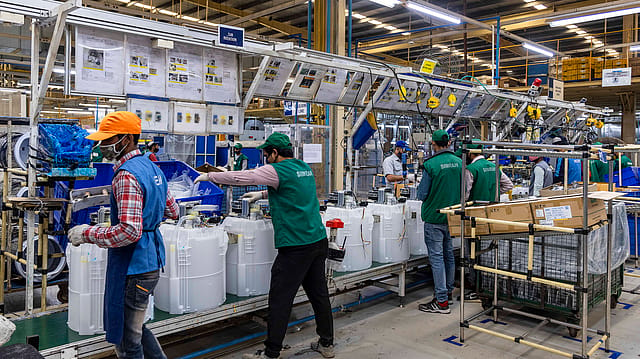8.5 mn salaried jobs added in Sept-Oct: CMIE
ADVERTISEMENT

Over 8.5 million salaried jobs were added cumulatively during September and October 2022, which is the highest since March 2020. Still, other forms of non-farm employment declined during these months, the Centre for Monitoring Indian Economy (CMIE) said.
With this, the total salaried workers in the country stood at 85-86 million, which suggests salaried jobs are back to pre-pandemic levels after 32 months. However, the increase in salaried jobs in Sept-Oct was largely in urban areas as salaried jobs are mostly urban jobs. Urban salaried jobs increased for a second consecutive month in October 2022 -- 2.14 million in September and 2.26 million in October.
The momentum is now expected to continue like this and the number could rise up to 90 million. "But, arguably, March 2020 was also partly impacted by the lockdown. Salaried jobs were higher at 88.8 million in January 2020 and at 86.5 million in February 2020. While the current salaried jobs at 85-86 million have crossed the levels seen just before the lockdowns, they need to rise further to come closer to 90 million to be considered as fully recovered," says CMIE CEO Mahesh Vyas.
The impact of the 2020 lockdown was slower and less severe on salaried jobs, compared to other forms of employment. Large proportions of daily wage labourers and business persons lost their livelihoods instantly upon the imposition of the lockdown. "Over 68% of the daily wage labourers and about 25% of business persons of March 2020 were out of work in April 2020," shows the CMIE data, adding the ratio for salaried employees left instantly jobless was much smaller at 18%.
December 2025
The annual Fortune 500 India list, the definitive compendium of corporate performance, is out. This year, the cumulative revenue of the Fortune 500 India companies has breached $2 trillion for the first time. Plus, find out which are the Best B-schools in India.
As per the CMIE, salaried jobs, by far, are the most well-paying form of employment. In 2021-22, the average remuneration of a salaried employee was ₹2,63,385 per annum, way ahead of wages in other forms of employment. For example, a business person made ₹1,34,323 per annum and small traders and daily wage labourers made about ₹1,17,053 per annum. Farmers made even lesser.
The data, however, shows job losses at a massive 11.8 million among daily wage labourers and small traders in the past two months, predominantly in rural India. "These jobs may come back soon. The problem is in the uncertainties of these jobs that dominate India’s labour markets," says Vyas.
Meanwhile, India's unemployment rate surged to 7.77% in October as compared to a four-year low of 6.43% in September, primarily due to a significant rise in the rural unemployment rate, essentially in non-agricultural rural India. Though the unemployment rate in urban areas declined to 7.21% from 7.70% in September, rural areas saw the jobless rate rise to 8.04% in the month. Notably, the CMIE data shows employment fell by 7.8 million in October 2022. The count of unemployed rose by 5.6 million. And about 2.2 million quit the labour market. The labour force shrunk from 432 million in September to 429.8 million. Employment fell from 404.2 million in September to 396.4 million in October 2022.
